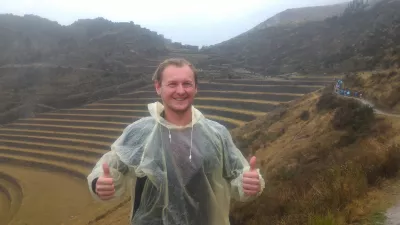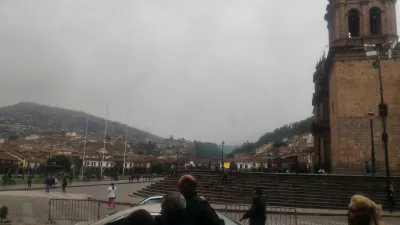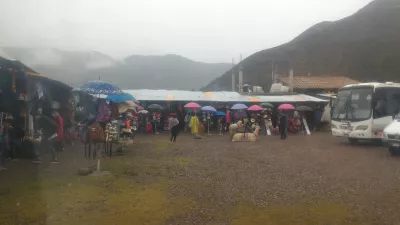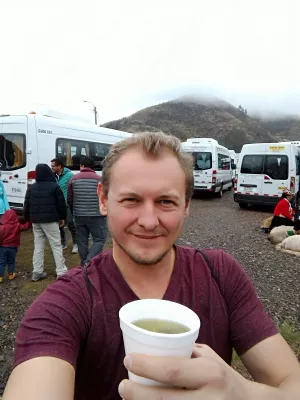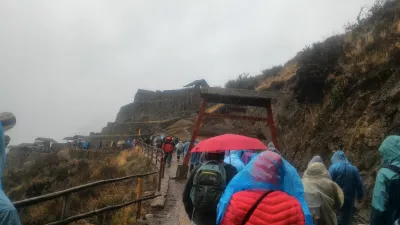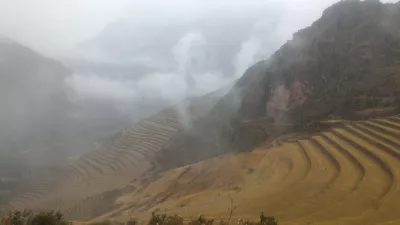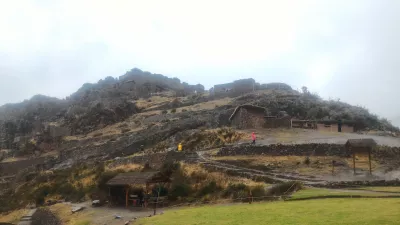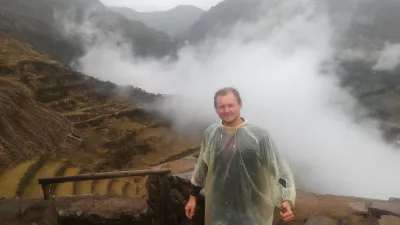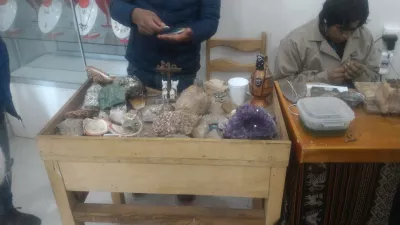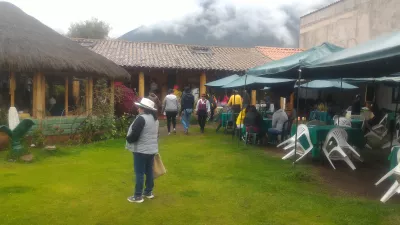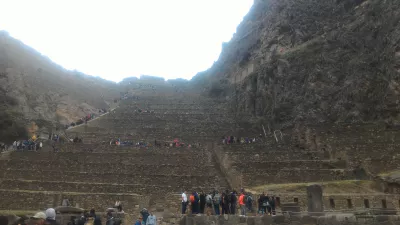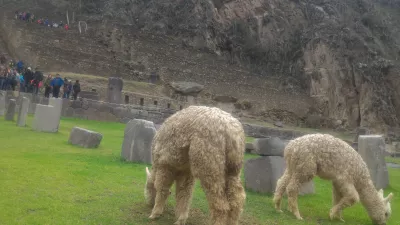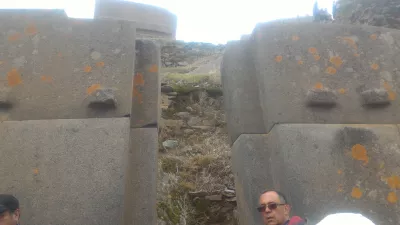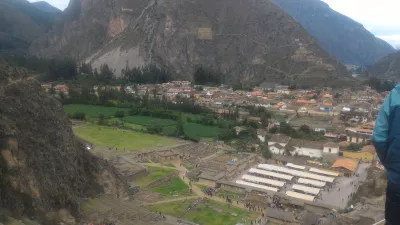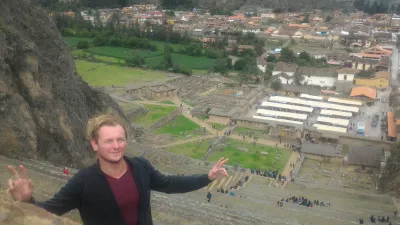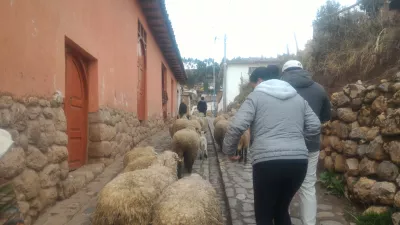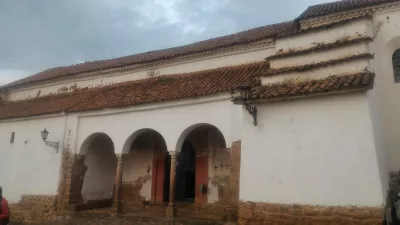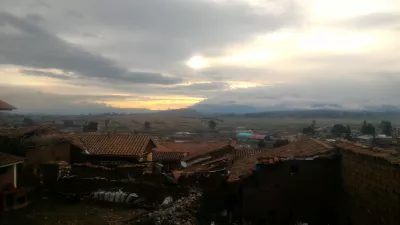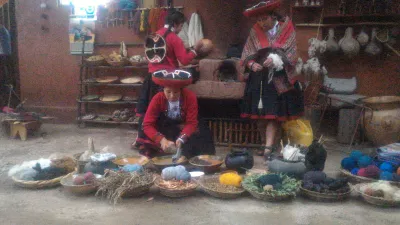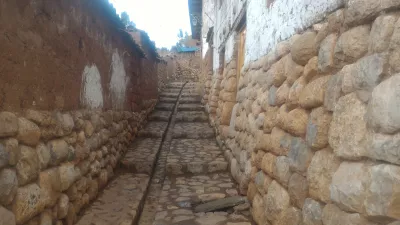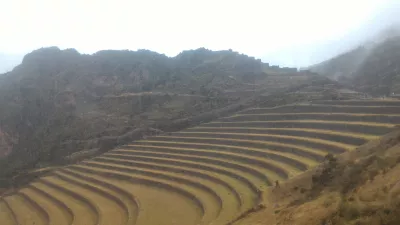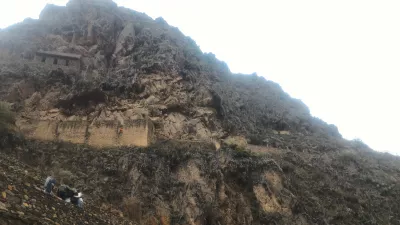How Is The Sacred Valley Peru 1 Day Trip?
Sacred Valley tour
For my last day in Cusco, I booked the Sacred Valley of the Incas tour, which include three main archaeological sites: Pisac ruins, Ollantaytambo ruins, and Chinchero archaeological center.
The pick up was planned at 8:30am, in front of the travel agency office, Bloody Bueno Peru, which is in the center of Cuzco.
There on time, a nice guide quickly found me, and stayed with me until the ride arrived, along with two nice New Zealanders that were also waiting with us.
Cusco: Find local activitiesFor this tour, an extra tourist ticket is necessary – I already got mine from the day before, during the quading ATV Sacred Valley tour.
- 10 best sacred valley tours and vacation packages
- The Sacred Valley of the Incas – Apus Peru Adventure Travel Specialists
- ATV tour Cusco quading
- Places to stay in Cusco for remote workers – Nomad Stays
We started by a one hour trip to an outdoor market, which wasn't interesting, but, with cold rainy weather, it was the opportunity to have a warm coca tea for S/2 (2$/1.5€).
Pisac ruins
Half an hour drive later, we arrived to the archaeological park of Pisac Peru ruins, a former very important Inca site.
The Incan Pisaq ruins dates back to the 15th century, and consist of very large gardens facing the sun on one side of the mountain, and lot of buildings on top of it.
The agricultural terraces are very impressive, literally being on the whole side of a steep mountain, and once again making us wonder how did the Inca manage to build all of this.
Even with modern machinery and tools, it is hardly believable.
The city of Pisac Cusco is also impressive, and difficult to access, especially on this rainy day, which makes all the stone staircases slippery.
However, some of us in the group manage to go to the top of this village, where we can appreciate a marvelous view on the mountains around and the terraces below us.
Book hotel Royal Inka PisacPisac ruins Incan terraces
Pisac market
Back in the van, the rain is getting a bit stronger, and we head to Pisaq town, where we stop at the Pisac market.
We enter a jewelry shop, and get a nice presentation on the stones and jewels that are hand made right there.
A worker is even seating next to the guide, working on some actual jewels, to prove us how authentic it is.
The seller tells us that the silver produced here is the purest of the world, with 95% pure silver, while most other silver are at 92.5%.
Well... all this only seems like marketing arguments, hard to actually believe any of it.
This second market stop seems as long and useless as the previous one, but we listen anyway, and enjoy a complimentary warm drink which is more than welcome by this weather.
About an hour later, we arrive to Urubamba, where we stop for lunch, enjoying a buffet that was included in the price.
The food is pretty good, the place is nice, and I discuss with two guys from the group, which tell me they are from Malaysia, actually in America for a business trip in Mexico, from which they escaped for a holiday week in Peru.
Ollantaytambo ruins
An hour drive after the lunch, we can continue our journey in the Sacred Valley of the Incas by going to Ollantaytambo sanctuary, an impressive Inca ruin in the mountain.
Stopping our bus Cusco Ollantaytambo at the entrance of the village, we walk to the site, which is impressive. It is basically a giant staircase built right in the mountain.
As usual with Inca ruins, the Cusco Ollantaytambo sanctuary leaves us puzzled.
How could they built something this huge? Especially knowing the timeline, as the construction of most important sites, like this one, only spanned over a century before the Spanish invasion destroyed it.
The terraces are huge, and occupy the whole mountain.
After gathering with the group, we start going up these terraces.
Halfway, we stop to hear more about the history.
Honestly, our guide is pretty bad. We do not understand anything he says in English, and, for me at least, even though I do speak quite good Spanish and understands most of it, I cannot understand anything the guide says.
Which makes our visit of Ollantaytambo Peru pretty dull, as there would be a lot to know about that place.
We do go up to the top, and listen to some more history, which we again do not understand.
The top of the hill was supposed to host the Sun temple, which hasn't been completed before the Spanish destroyed the Inca city, and all that remains now is the Wall of the Six Monoliths, an impressive structure with perfectly fitting huge stones.
The same questions arise now as when visiting any other Inca site: how did they built it? Why?
One more time, these questions will remain unanswered.
The way down seems very difficult, as the large steps are harder to descend than they were to ascend.
Chinchero
Our next stop, an hour later, is the centro arqueologico de Chinchero.
Parking the minibus at the entry of the city, we have to walk in Chinchero city for about 20 minutes, until we reached that archaeological center, surrounded by some Inca ruins, which won't even be mentioned by our guide.
We go straight inside a church, in which it is strictly forbidden to take pictures or use a camera in general, a security guard being taking care of that.
We site in the Christian church, and learn that it is very old, and the church decorations are or Inca inspiration, as it was used to convert them.
For example, in paintings related to Christ, in which the background would generally represents Europe, it represents there the Andean mountains.
We do not stay long in the church, as we cannot make much noise and aren't allowed to take pictures, and go back to the bus.
Chinchero market
The last stop of our Cusco Sacred Valley tour is the market, and to be precise the center for traditional textiles of Cusco.
There, we get a show about the process of textile coloring.
It is interesting, but we now all have enough of shops, as we all came here to visit Inca sites, and not to go shopping.
Chinchero market Peru traditional textile dyingCusco Sacred Valley tour summary
For S/60 (18$ / 15.5€) with lunch included, it is an interesting day tour from Cusco, getting to few very interesting Inca sites.
However, the entrance to these sites is additional for S/70 (21$ / 18€) for two days also including Moray ruins, or S/130 (39$ / 34€) for 10 days including many other sites.
There is a lot to learn about these places, and it is important to have a good guide, which wasn't our case on that day, as we could not understand most of what he was saying.
Also, the weather might make it difficult if not dangerous, when rain falling on the Inca stones makes them slippery.
However, an interesting day tour from Cusco.
Bloody Bueno Peru websiteFrequently Asked Questions
- What are the key highlights of a 1-day trip to the Sacred Valley, and what cultural and historical insights does it offer?
- A 1-day trip to the Sacred Valley includes key highlights like the Pisac market, Ollantaytambo ruins, and Maras salt pans. It offers insights into the Inca civilization, traditional Andean culture, and the valley's importance in Peruvian history.
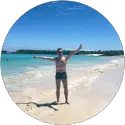
Michel Pinson is a Travel enthusiast and Content Creator. Merging passion for education and exploration, he iscommitted to sharing knowledge and inspiring others through captivating educational content. Bringing the world closer together by empowering individuals with global expertise and a sense of wanderlust.

